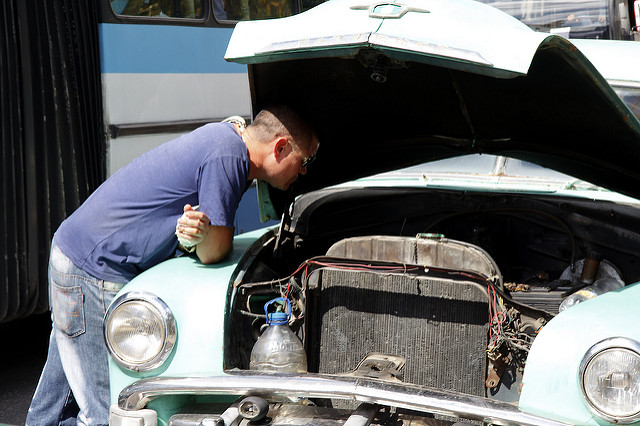How to Pressure Test Your Car's Coolant System
10th Oct 2017

Modern-day automobile engines are designed to operate at a temperature of 195 degrees to 220 degrees Fahrenheit. When internal temperatures exceed this limit, it can damage or destroy critical components. Overheating, for instance, can cause the engine block to warp or crack, or it may cause gaskets to blow. Regardless, the engine must stay within the appropriate temperature range to protect against potentially catastrophic failure.
Thankfully, the coolant system typically regulates the engine temperature automatically. Being a closed system, it flushes coolant to the engine where it collects heat and then back to the radiator where it's released through the front of the vehicle. If there's a coolant leak, however, the system won't be able to perform this task. A simple and effective way to find a coolant leak is to pressure test the system.
What is a Coolant System Pressure Test?
A coolant system pressure test is a test used to check the pressure of a car's coolant system. Most mechanics can perform this test, or you can buy the testing kit to perform yourself. Surprisingly, the cost of buying a coolant system pressure testing kit is about the same as paying a mechanic to do it once.
The pressure test works by adding air into the radiator, up to the total amount of pressure for which the cap is rated. Different radiator caps are rated for different pressure. If there's a leak, the pressure will drop and you will probably notice coolant spewing out (at least before the pressure drops).
How to Perform a Pressure Test
Performing a coolant system pressure test is actually a lot easier than it sounds. Once you've acquired the testing kit, you'll need to connect the compatible radiator attachment to the air pump. Next, secure the radiator attachment to the top of your radiator, at which point you can begin to pump air into your radiator up to the maximum amount for the which the cap is radiator. If your radiator cap is rated for 16 pounds, for instance, you should pump 16 pounds of pressure into the coolant system. After doing so, observe the radiator and coolant lines for a leak.
By pumping air into your vehicle's coolant system, it will force coolant out through any leaks. So, if there's a leak in the radiator, you should see it. You may also be able to hear it by listening closely.
Photo credit: Godo

